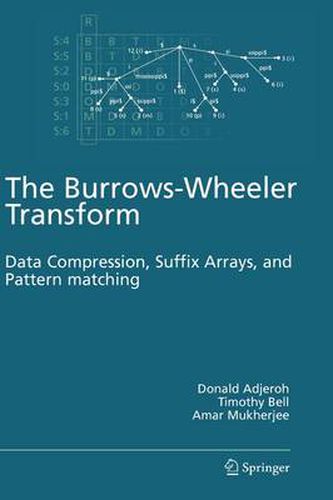Readings Newsletter
Become a Readings Member to make your shopping experience even easier.
Sign in or sign up for free!
You’re not far away from qualifying for FREE standard shipping within Australia
You’ve qualified for FREE standard shipping within Australia
The cart is loading…






This title is printed to order. This book may have been self-published. If so, we cannot guarantee the quality of the content. In the main most books will have gone through the editing process however some may not. We therefore suggest that you be aware of this before ordering this book. If in doubt check either the author or publisher’s details as we are unable to accept any returns unless they are faulty. Please contact us if you have any questions.
The Burrows-Wheeler Transform is one of the best lossless compression me- ods available. It is an intriguing - even puzzling - approach to squeezing redundancy out of data, it has an interesting history, and it has applications well beyond its original purpose as a compression method. It is a relatively late addition to the compression canon, and hence our motivation to write this book, looking at the method in detail, bringing together the threads that led to its discovery and development, and speculating on what future ideas might grow out of it. The book is aimed at a wide audience, ranging from those interested in learning a little more than the short descriptions of the BWT given in st- dard texts, through to those whose research is building on what we know about compression and pattern matching. The ?rst few chapters are a careful description suitable for readers with an elementary computer science ba- ground (and these chapters have been used in undergraduate courses), but later chapters collect a wide range of detailed developments, some of which are built on advanced concepts from a range of computer science topics (for example, some of the advanced material has been used in a graduate c- puter science course in string algorithms). Some of the later explanations require some mathematical sophistication, but most should be accessible to those with a broad background in computer science.
$9.00 standard shipping within Australia
FREE standard shipping within Australia for orders over $100.00
Express & International shipping calculated at checkout
This title is printed to order. This book may have been self-published. If so, we cannot guarantee the quality of the content. In the main most books will have gone through the editing process however some may not. We therefore suggest that you be aware of this before ordering this book. If in doubt check either the author or publisher’s details as we are unable to accept any returns unless they are faulty. Please contact us if you have any questions.
The Burrows-Wheeler Transform is one of the best lossless compression me- ods available. It is an intriguing - even puzzling - approach to squeezing redundancy out of data, it has an interesting history, and it has applications well beyond its original purpose as a compression method. It is a relatively late addition to the compression canon, and hence our motivation to write this book, looking at the method in detail, bringing together the threads that led to its discovery and development, and speculating on what future ideas might grow out of it. The book is aimed at a wide audience, ranging from those interested in learning a little more than the short descriptions of the BWT given in st- dard texts, through to those whose research is building on what we know about compression and pattern matching. The ?rst few chapters are a careful description suitable for readers with an elementary computer science ba- ground (and these chapters have been used in undergraduate courses), but later chapters collect a wide range of detailed developments, some of which are built on advanced concepts from a range of computer science topics (for example, some of the advanced material has been used in a graduate c- puter science course in string algorithms). Some of the later explanations require some mathematical sophistication, but most should be accessible to those with a broad background in computer science.